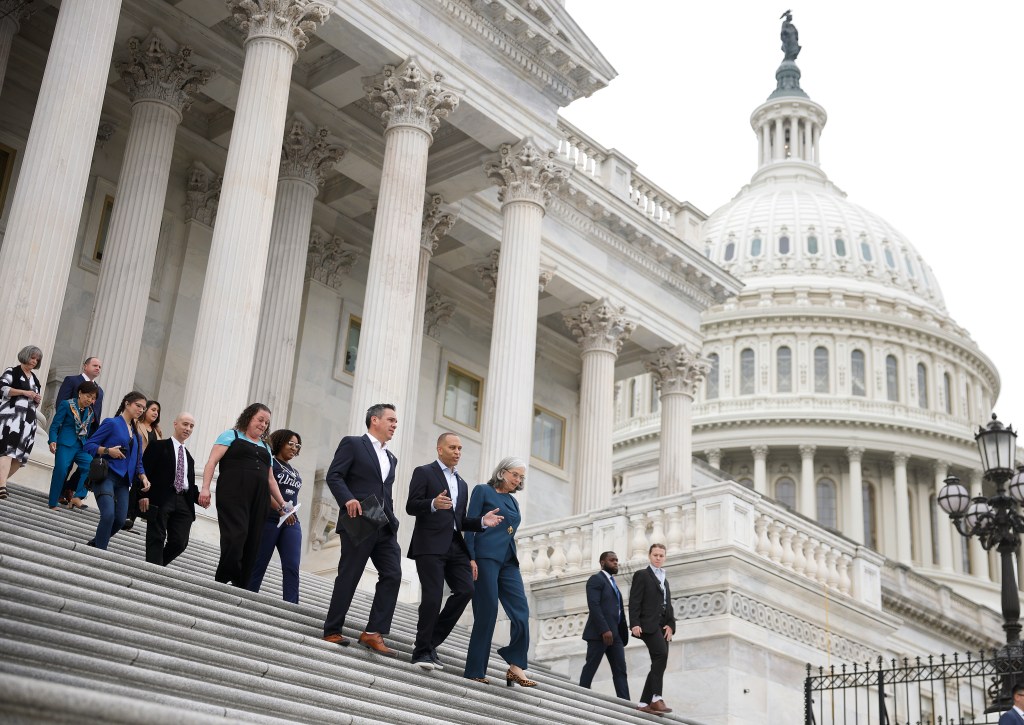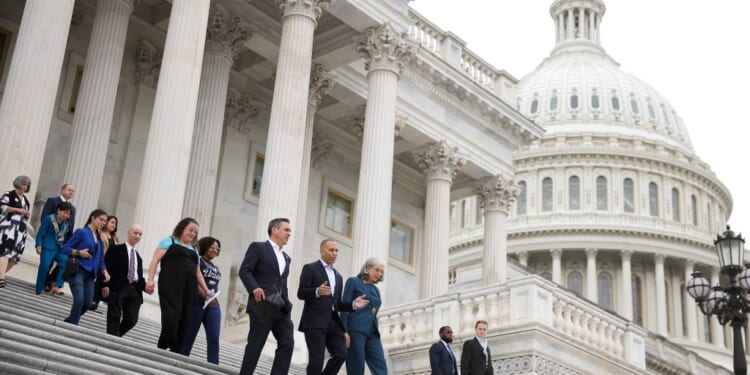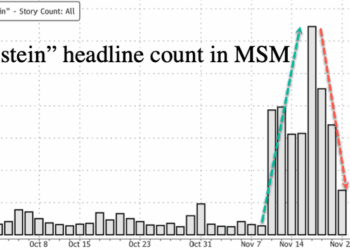
There have been some close calls leading up to this point. In December, Republicans and Democrats reached an initial agreement to keep the government open just days before its deadline that month—only for Republicans in the House of Representatives to rebel, arguing that the agreement contained too many extraneous measures. Incoming President Donald Trump then asked Congress not only to avert a shutdown but also to raise the debt ceiling in the process—a tall task because spending hawks usually demand that spending cuts be passed along with any increase. As expected, fiscal hardliners voted with Democrats to kill that bill. Finally, Congress agreed on a slimmed-down bill to avert the shutdown, which did not include the debt ceiling measure, passing it in the nick of time.
But that law only extended spending until March. By that point, Republicans controlled both chambers of Congress, unlike in December when they only had the House. So the question was whether Senate Democrats would filibuster the Republican bill to keep the government open. Ultimately, though, there was no filibuster, and enough Democrats joined Republicans to advance the bill. Senate Minority Leader Chuck Schumer led the capitulation, drawing the ire of his party’s base.
The question heading into Tuesday evening’s vote was whether Democrats would surrender again. Almost two weeks ago, the House passed a stopgap spending measure that would have extended the government’s current funding levels until November 21. The strategy of House Speaker Mike Johnson and Senate Majority Leader John Thune—just like in March—was to dare Democrats to block it. The two Republicans met with Trump, Schumer, and House Minority Leader Hakeem Jeffries at the White House on Monday, but made no significant progress toward an agreement.
That was the state of play as the Senate met Tuesday to consider the House’s continuing resolution, which needed 60 votes to pass. Although House Democrats showed up to make a statement, Johnson did not call his Republican caucus to Washington, D.C., making it so that the Senate either needed to accept his chamber’s bill or shut things down. Democrats chose the latter. While three Democrats voted for the resolution, it did not garner the 60 votes it needed to pass.
The way out is unclear.
Amid the earlier battle, the Democrats’ demands were primarily technical and funding-related, such as their ask for reforms to the recissions process. But this time, if you ask Democrats, their refusal to budge comes down to health care reform. In the lead-up to the funding deadline, they demanded Republicans negotiate policies such as extending tax credits for people who buy health insurance under the Affordable Care Act (ACA), which are set to expire at the end of this year. Democrats argue that it is necessary to address the issue now rather than in December because open enrollment season is underway, and some insurers have already sent notices to people on the program indicating that their rates are set to increase next year.
However, their counterproposal contained not just a permanent extension of those tax credits, but also a repeal of the changes to Medicaid that Republicans made in the One Big Beautiful Bill Act (OBBBA) passed in July. The repeal of the OBBBA health care provisions alone would cost more than $1 trillion over the next 10 years, with the ACA tax credit extension adding even more on.
Even on Tuesday morning, Jeffries wasn’t budging from those asks. “Our position is a simple one: Cancel the cuts, lower the cost, save health care,” he said at a press conference that featured speeches from people who depend on federal health care programs. “That’s what this fight is all about. We’re here. We’re ready. We’re willing and able to find a bipartisan path forward to fund the government in a way that actually meets the needs of the American people in terms of their health, their safety, and their economic well-being.”
Republicans said they were willing to work with Democrats on the possibility of extending the ACA tax credits, passed in 2021 in response to the COVID-19 pandemic, but they would do so independent of appropriations. “We’re happy to sit down and talk about these other issues that they’re interested in, but it should not have anything to do with whether or not, for a seven-week period, we keep the federal government open,” Thune said at a press conference Tuesday afternoon.
Both sides are refusing to budge from their positions, and Republicans especially have little incentive to do so. As The Dispatch previously detailed, the dynamics of a shutdown heavily favor Trump. With essential functions of the executive branch continuing, there may be some interruption for the White House, but it is unlikely that anything will substantially affect his ability to put his agenda in place through executive action.
Additionally, federal workers, traditionally a Democratic constituency, don’t get paid during a shutdown, and Trump is vowing to make this one especially painful for them. Last week, the Office of Management and Budget sent a directive to federal agencies to begin the process of mass firings in the event of a shutdown. Trump on Tuesday morning did not say how many federal workers he planned to lay off, but he said he was open to putting quite a few out of work. “We may do a lot, and that’s only because of the Democrats,” he told reporters.
The prospect of mass firings was what got Schumer and other Democrats to fold in March, but Schumer dismissed those concerns this time, saying Trump would fire federal workers with or without a shutdown. “The bottom line is, he’s doing it anyway. They’ve already cut 300,000 people … It will fall on him, as I said. He’s the one doing the firings, not Democrats,” he said at a Tuesday press conference.
Rep. Jamie Raskin, the top Democrat on the House Judiciary Committee, argued Trump did not have the authority to go through with his plans and that Democrats and their allies could oppose him with lawsuits. “The Trump people don’t like to hear it, but they are governed by law,” he told TMD. “They are governed by the civil service requirements. They are governed by all of the federal protections that we have for federal workers.”
The next few days—or weeks—will show how much Democrats are able to bear the pain that federal employees will endure during this shutdown. Unless Democrats settle for the continuing resolution they have already rejected, the House will need to come back and approve an alternative both parties can agree to. But it remains unclear whether Johnson plans to bring his members back.
Whether House Republicans need to come back to pass an agreement or not, it is unclear how long the shutdown will last and what concessions each side needs to make. Democratic Sen. Chris Murphy of Connecticut put the onus on the GOP to offer his party something it can accept.
“They have only offered a partisan [continuing resolution], and they’ve refused to meet with Democrats,” he told TMD. “The path out of this is to sit down and talk.”

















